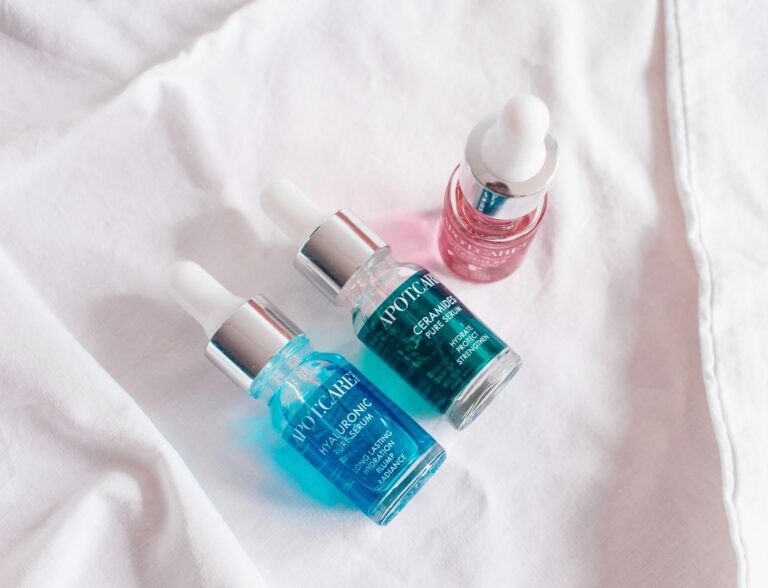
In the constantly changing landscape of cosmetic enhancements, dermal fillers have become exceedingly popular due to their effectiveness in restoring youthful volume and smoothing out wrinkles.
With a variety of options available, ranging from hyaluronic acid to autologous fat fillers, the selection process can understandably feel quite overwhelming.
This guide aims to examine the different types of dermal fillers, assist you in evaluating your individual needs and budget, and emphasize key considerations on how to choose the right filler for your needs in the UK.
Moreover, we will discuss potential side effects and risks involved, ensuring that you are equipped to make an informed decision. Together, let’s explore how to achieve your aesthetic goals safely and effectively.
What Are The Different Types of Dermal Fillers?

Dermal fillers have become a widely sought-after option in aesthetic treatments throughout the UK, providing effective solutions for various concerns, including volumising facial features, minimising fine lines and wrinkles, and improving skin texture. Dermal fillers are made of substances like hyaluronic acid, calcium hydroxylapatite, and poly-L-lactic acid, which work to restore volume and enhance the skin’s appearance.
Gaining a clear understanding of the different types of dermal fillers available can greatly assist individuals in selecting the filler that best matches their aesthetic goals and skin type.
With choices ranging from hyaluronic acid, celebrated for its hydrating qualities, to calcium hydroxylapatite and PMMA fillers, each type offers distinct benefits and applications, catering to a variety of patient preferences and treatment areas.
1. Hyaluronic Acid Fillers
Hyaluronic acid fillers are among the most commonly used dermal fillers, valued for their ability to provide hydration and a natural appearance to the skin.
These versatile formulations are designed to mimic the body’s own hyaluronic acid, effectively enhancing skin volume and elasticity. They are frequently employed in various treatment areas, including the lips, cheeks, and under-eye regions, making them a popular option for individuals looking to achieve a more youthful appearance.
The longevity of hyaluronic acid fillers generally ranges from six months to a year, influenced by factors such as the specific product used and an individual’s metabolism.
Before undergoing any treatment, it is crucial to consult with a qualified practitioner. They can provide guidance on safety, expected results, and techniques that cater to individual needs, ensuring a high level of patient satisfaction while minimising potential risks.
2. Calcium Hydroxylapatite Fillers
Calcium hydroxylapatite fillers present a strong option for individuals seeking volumising effects while also encouraging collagen stimulation in the skin.
These innovative fillers consist of calcium microspheres suspended in a gel, which facilitates easy injection and delivers immediate results. They are commonly used for facial volume restoration, wrinkle reduction, and enhancing facial contours, offering a natural-looking enhancement that can last significantly longer than traditional hyaluronic acid fillers.
Patients often appreciate the dual benefits of volumisation and collagen production, leading to an overall improvement in skin quality over time. When administered properly, these fillers are generally considered safe; however, mild side effects such as redness or swelling may occur, though they are usually transient.
Many patients have reported enhanced durability and effectiveness, contributing to its popularity in aesthetic treatments.
3. Poly-L-lactic Acid Fillers
Poly-L-lactic acid fillers are distinctive in that they stimulate collagen production over time, resulting in gradual and natural-looking results for aesthetic treatments. This characteristic makes them particularly appealing for individuals seeking long-lasting rejuvenation effects without the hassle of frequent touch-ups.
These fillers are typically applied in areas where volume loss is most evident, such as the cheeks, temples, or nasolabial folds. The pre-treatment consultation plays a vital role, as it provides an opportunity for patients to discuss their aesthetic goals and any concerns they may have with their practitioner. This ensures a personalised approach to their treatment.
The results from these fillers can last up to two years or even longer, though regular maintenance sessions may be advisable for optimal results. It is also essential to keep in mind that, like any treatment, potential side effects such as swelling, bruising, or nodules may occur. Therefore, engaging in informed discussions with a skilled practitioner is crucial for a successful experience.
4. Polymethylmethacrylate (PMMA) Fillers
Polymethylmethacrylate (PMMA) fillers offer a semi-permanent option for enhancing facial features and addressing deep wrinkles. These fillers consist of biocompatible microspheres that provide both volume and structure, resulting in effects that can last for several years. This longevity makes PMMA fillers a popular choice for individuals seeking long-term cosmetic enhancements.
Typically, these fillers are used in areas such as the nasolabial folds, marionette lines, and hollows beneath the eyes. It is crucial to have skilled injectors who possess a deep understanding of facial anatomy to ensure optimal results and minimise potential risks associated with the procedure. Proper training is essential, as improper application can lead to complications.
While patients from various demographics may benefit from these fillers, it is important to consider individual skin types, medical histories, and aesthetic goals when assessing suitability. Addressing any concerns about safety and longevity is also a vital part of the decision-making process.
5. Autologous Fat Fillers
Autologous fat fillers involve the extraction of fat from the patient’s own body, making them an attractive option for individuals seeking results that are both highly compatible and natural.
This technique not only reduces the risk of allergic reactions but also facilitates the seamless integration of the injected tissue into the surrounding areas. Patients often appreciate the added benefit of body contouring, as unwanted fat is removed from areas such as the abdomen or thighs, enhancing their overall body shape while simultaneously providing volumisation where it is needed.
During the consultation process, it is essential for practitioners to thoroughly educate patients about the procedure, expected outcomes, and necessary aftercare. Providing proper guidance ensures that patients are well-informed about what to expect regarding recovery and the longevity of their results, which can often last several months to years, depending on individual factors and the specific area being treated.
How to Choose the Right Filler for Your Needs?

Selecting the appropriate filler for your needs is a vital step in reaching your aesthetic objectives. This process requires thoughtful consideration of various factors, including skin type, budget, and specific concerns.
Working with a knowledgeable practitioner can be invaluable, as they will guide you through the available options, ensuring that the chosen filler is suitable for the treatment area and aligned with your desired results and safety standards.
It is important to engage in a comprehensive consultation where you can openly discuss your concerns and expectations, while also reviewing the experiences and recommendations of others who have undergone similar treatments.
1. Determine Your Specific Concerns
Identifying your specific concerns is the essential first step in selecting the appropriate filler, whether you aim to address fine lines, wrinkles, or improve skin texture.
Understanding these individual aesthetic goals is vital for achieving the desired outcomes, such as enhancing volume in the cheeks, smoothing nasolabial folds, or adding subtle definition to the lips.
Consulting with a qualified professional can provide valuable insights into matching your specific issues with the right type of filler. You might consider options like hyaluronic acid, which delivers temporary yet effective results, or other alternatives such as calcium hydroxylapatite for deeper wrinkles.
By aligning the treatment areas with the right product, individuals can ensure they are not only meeting their cosmetic goals but also enhancing their overall facial harmony.
2. Consider Your Budget
Budget considerations are crucial when selecting fillers, as prices can vary significantly across different brands and types.
When evaluating the cost of dermal fillers in the UK, it is important to conduct a thorough analysis that goes beyond just the initial price. Clients should take into account additional factors, such as potential long-term expenses associated with maintenance treatments that may be needed to maintain the desired results.
Aftercare, which includes follow-up appointments and any necessary corrective procedures, can also influence the overall costs. While setting a realistic budget is essential, it should not overshadow the importance of ensuring safety and effectiveness in the chosen procedure.
By comparing various options, clients can strike a balance between affordability and quality, allowing them to make a well-informed decision about their treatment.
3. Research the Reputation of the Filler
Researching the reputation of fillers is essential, as understanding which brands are well-reviewed can lead you to safe and effective options.
Given the plethora of choices available in the market, taking the time to explore different filler brands can significantly influence your overall experience and satisfaction. It is advisable to pay close attention to patient testimonials and expert reviews, as these can provide invaluable insights into the safety and effectiveness of each product.
Gathering recommendations from previous patients offers firsthand knowledge, ensuring that you make an informed decision. Focusing on these factors not only enhances your understanding but also instils confidence that the selected fillers will deliver the desired results while prioritising your well-being.
4. Consult with a Professional
Consulting with a qualified practitioner is essential for understanding the available options and making an informed decision regarding fillers.
During this important meeting, individuals have the opportunity to explore various treatment pathways while gaining comprehensive insights into the procedures, potential risks, and expected outcomes. It is crucial for the practitioner to provide clear and transparent information about their qualifications and experience, allowing patients to feel confident in their safety.
Patient education is vital in raising awareness about the effects of fillers, including any possible side effects. Additionally, informed consent is a critical aspect of the process, ensuring that individuals are fully aware of what to expect. This understanding ultimately enhances their overall satisfaction with the treatment.
What Are the Possible Side Effects and Risks?

Similar to any cosmetic procedure, dermal fillers carry potential side effects and risks that patients should consider before undergoing treatment.
Common side effects may include swelling, bruising, or redness at the injection site. Conversely, more serious risks can include allergic reactions or infections.
Being aware of these factors is crucial for making an informed decision and ensuring a safe treatment experience.
1. Common Side Effects
Common side effects following filler injections may include temporary swelling, bruising, and redness at the injection site, all of which typically resolve on their own.
These effects are generally mild and can last anywhere from a few hours to several days, varying according to individual sensitivity and the specific type of filler used. To manage any discomfort, one may consider applying ice packs to the affected areas to help reduce swelling and alleviate pain.
For those dealing with bruising, arnica gel or creams can be beneficial in speeding up the healing process.
It is crucial for patients to follow aftercare instructions, such as avoiding strenuous exercise, steering clear of extreme temperatures, and refraining from excessive touching of the treated area. Doing so can enhance comfort and promote a smoother recovery.
2. Serious Risks
Whilst it is uncommon, there are serious risks associated with dermal fillers that can include allergic reactions or complications requiring immediate medical attention.
These risks highlight the importance of individuals considering such treatments to engage in comprehensive discussions with their healthcare providers. Patients should remain vigilant for subtle signs of complications, such as swelling that persists longer than expected, ongoing redness, or pain at the injection site. Recognising that these symptoms may indicate a more significant issue is essential.
During consultations, practitioners should emphasise the importance of safety protocols, which include reviewing the patient’s medical history and identifying any potential contraindications. Encouraging open communication can facilitate well-considered choices, ultimately leading to safer and more satisfactory outcomes for all involved.
How to Find a Reputable Filler Provider in the UK?
It is important to find a reputable filler provider in the UK to ensure a safe and satisfactory experience with cosmetic fillers.
To begin your search, consider researching different aesthetic clinics and checking their qualifications and accreditations to confirm their credentials.
Additionally, reading reviews from previous patients can offer valuable insights into their experiences and the quality of care provided by the practitioner.
1. Do Your Research
Conducting thorough research on aesthetic clinics is essential for finding a reputable filler provider that aligns with your needs and expectations.
By exploring a variety of online resources and local options, you can gather valuable insights into the available choices. It is important to consider not only reviews and testimonials but also to examine market trends that highlight the most trusted providers in the field.
Understanding the demographics of other patients can provide clarity on whether the clinic’s expertise matches your specific goals and preferences. Pay attention to aspects such as the clinic’s atmosphere, the qualifications of the staff, and the safety protocols in place, as these factors significantly contribute to ensuring a positive experience and satisfactory results.
2. Check for Certifications and Accreditations
Checking for certifications and accreditations is an important step when selecting a filler provider, as it reflects the practitioner’s qualifications and adherence to industry standards.
This process is crucial not only for confirming that the provider has received proper training in filler techniques but also for protecting clients from potential risks associated with unregulated practices. The significance of such training is immense, as it equips practitioners with the essential skills to administer injections safely.
Following safety regulations helps to minimise complications, offering peace of mind to those seeking aesthetic enhancements.
When assessing options, it is advisable to consider the provider’s commitment to ongoing education and best practices. This way, you can make a confident choice in a market where safety should always remain a priority.
3. Read Reviews and Testimonials
Reading reviews and testimonials from previous patients can offer invaluable insights into the experiences and treatment outcomes at specific clinics and with particular practitioners.
By taking the time to explore these narratives, potential patients can gain a clearer understanding of the level of care they might expect. Authentic reviews often emphasise not only the effectiveness of the treatments but also the overall patient experience, which includes factors such as staff friendliness and the clinic environment.
It is essential to seek out comments that reflect genuine sentiments rather than generic praise, as these can highlight the true strengths and weaknesses of healthcare providers. Such insights can significantly influence decision-making, ultimately guiding individuals towards informed choices when selecting a provider that aligns with their health needs and personal comfort.
4. Schedule a Consultation
After researching potential providers, scheduling a consultation becomes an essential step to discuss your needs and receive professional advice tailored specifically to your situation.
This important meeting lays the groundwork for building a trusting relationship between the patient and the provider. It allows for a comprehensive evaluation of your medical history, lifestyle factors, and personal preferences.
Through this dialogue, the importance of informed consent is highlighted, ensuring that everyone involved understands the available options along with the associated risks.
This process helps in creating personalised treatment plans that align with individual goals and expectations, while also addressing safety measures and the effectiveness of the proposed interventions.
Ultimately, this approach give the power tos individuals to make well-informed decisions regarding their healthcare.
Frequently Asked Questions: How to Choose the Right Filler for Your Needs in the UK
1. How do I know which type of filler is right for me?
Choosing the right filler depends on your specific needs and concerns. It is important to consult with a qualified professional who can assess your skin and recommend the best filler for you.
2. What are the different types of fillers available in the UK?
There are several types of fillers available in the UK, including hyaluronic acid fillers, collagen fillers, and calcium hydroxylapatite fillers. Each type offers different benefits and is suitable for different areas of the face.
3. Are there any risks or side effects associated with fillers?
Like any medical procedure, there are risks and potential side effects associated with fillers. These may include bruising, swelling, and infection. It is important to discuss any concerns with your provider before undergoing treatment.
4. How long do fillers last?
Filler results typically last 6-18 months, depending on the type and individual metabolism. Regular touch-ups may be needed, and knowing when to get fillers topped up depends on the gradual return of volume loss or fine lines.
5. Can fillers be used to treat all areas of the face?
Fillers can be used to treat a variety of areas on the face, including the cheeks, lips, and nasolabial folds. However, some areas, such as the under-eye area, may require a different type of filler or a combination of treatments for optimal results.
6. How do I find a reputable provider for fillers in the UK?
When choosing a provider for fillers, it is important to do your research and choose a qualified and experienced professional. Look for reviews, before and after photos, and make sure they are properly trained and certified in administering fillers.






